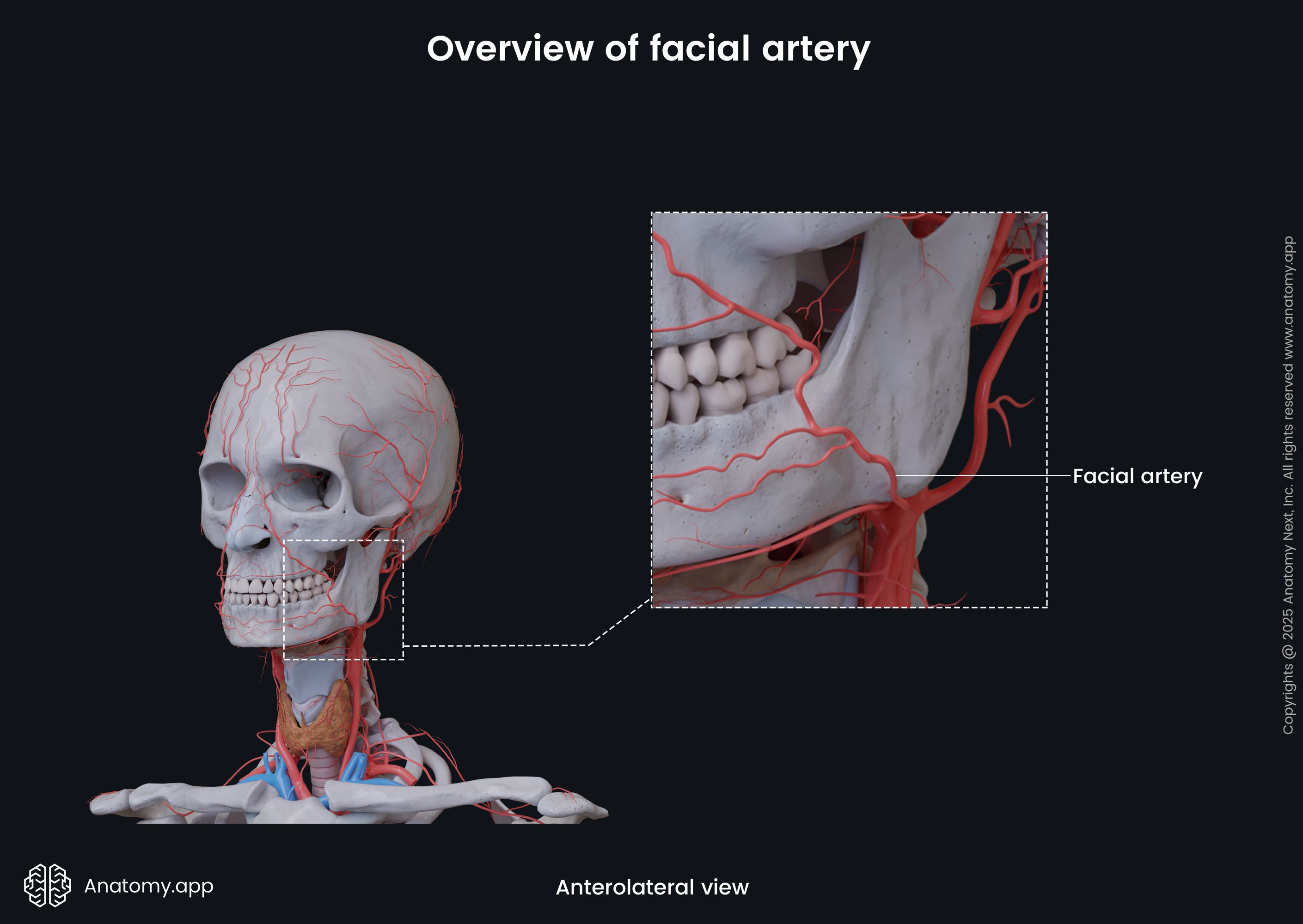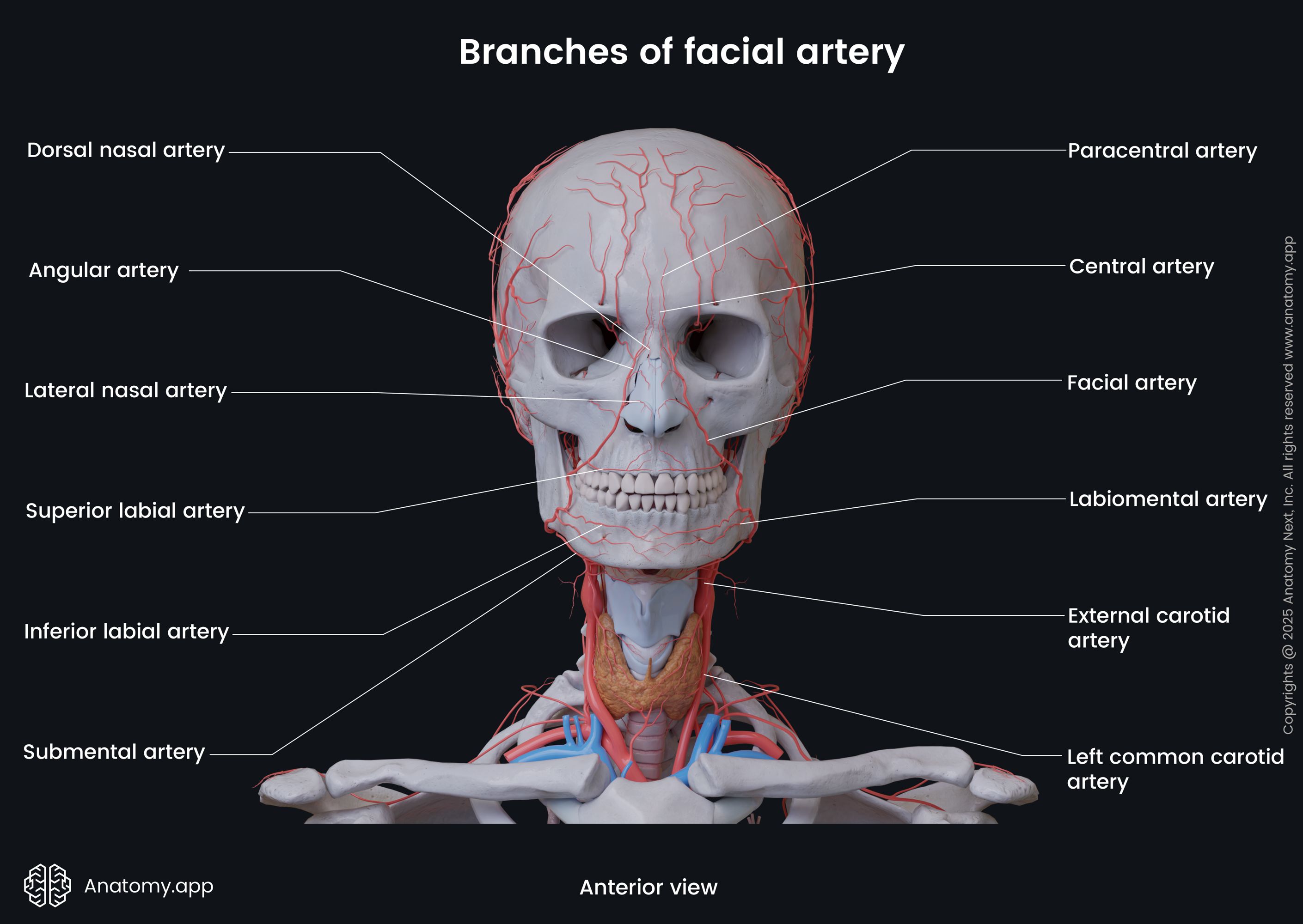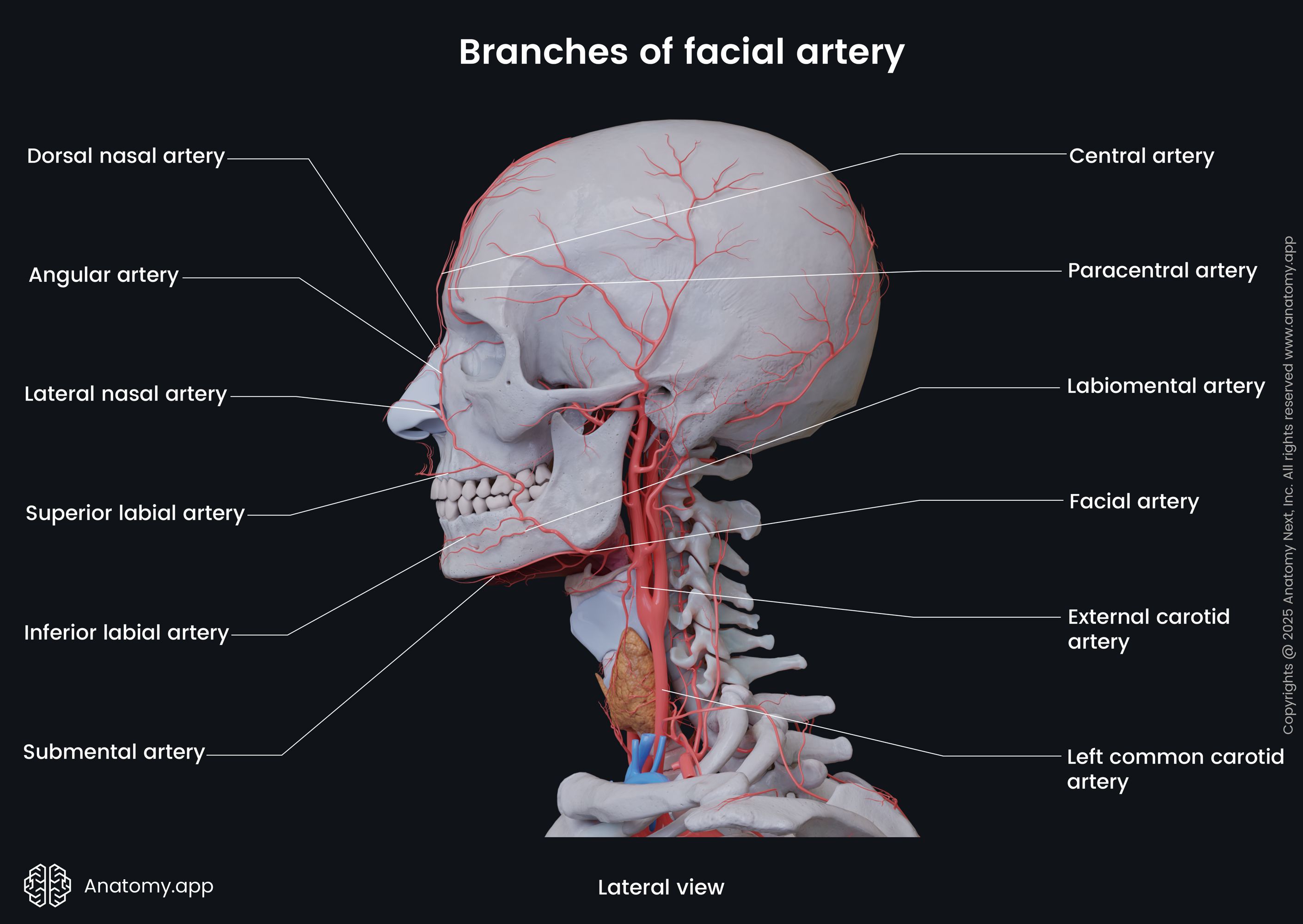- Anatomical terminology
- Skeletal system
- Joints
- Muscles
- Heart
- Blood vessels
- Blood vessels of systemic circulation
- Aorta
- Blood vessels of head and neck
- Arteries of head and neck
- Veins of head and neck
- Blood vessels of upper limb
- Blood vessels of thorax
- Blood vessels of abdomen
- Blood vessels of pelvis and lower limb
- Blood vessels of systemic circulation
- Lymphatic system
- Nervous system
- Respiratory system
- Digestive system
- Urinary system
- Female reproductive system
- Male reproductive system
- Endocrine glands
- Eye
- Ear
Facial artery
The facial artery (also known as external maxillary artery, Latin: arteria facialis; arteria maxillaris externa) arises from the external carotid artery in the carotid triangle at the level of the angle of the mandible. The facial artery with its branches supplies the submandibular gland, lips, chin, most of the facial muscles, tongue, auditory tube, soft palate, and tonsils.

At the level of the angle of the mandible, the facial artery ascends and runs forward beneath the digastric and stylohyoid muscles over which it arches upwards and grooves to emerge on the posterior surface of the submandibular gland. Then the facial artery curves around the base of the mandible, anterior to the masseter muscle, and appears on the face.
On the face, the facial artery ascends laterally and reaches the corner of the mouth, and the lateral surface of the external nose. The blood vessel ends at the medial commissure of the eye as the angular artery. The facial artery gives off several side branches on its way, including:
- Ascending palatine artery
- Tonsillar artery
- Submental artery
- Glandular branches
- Superior labial artery
- Inferior labial artery

